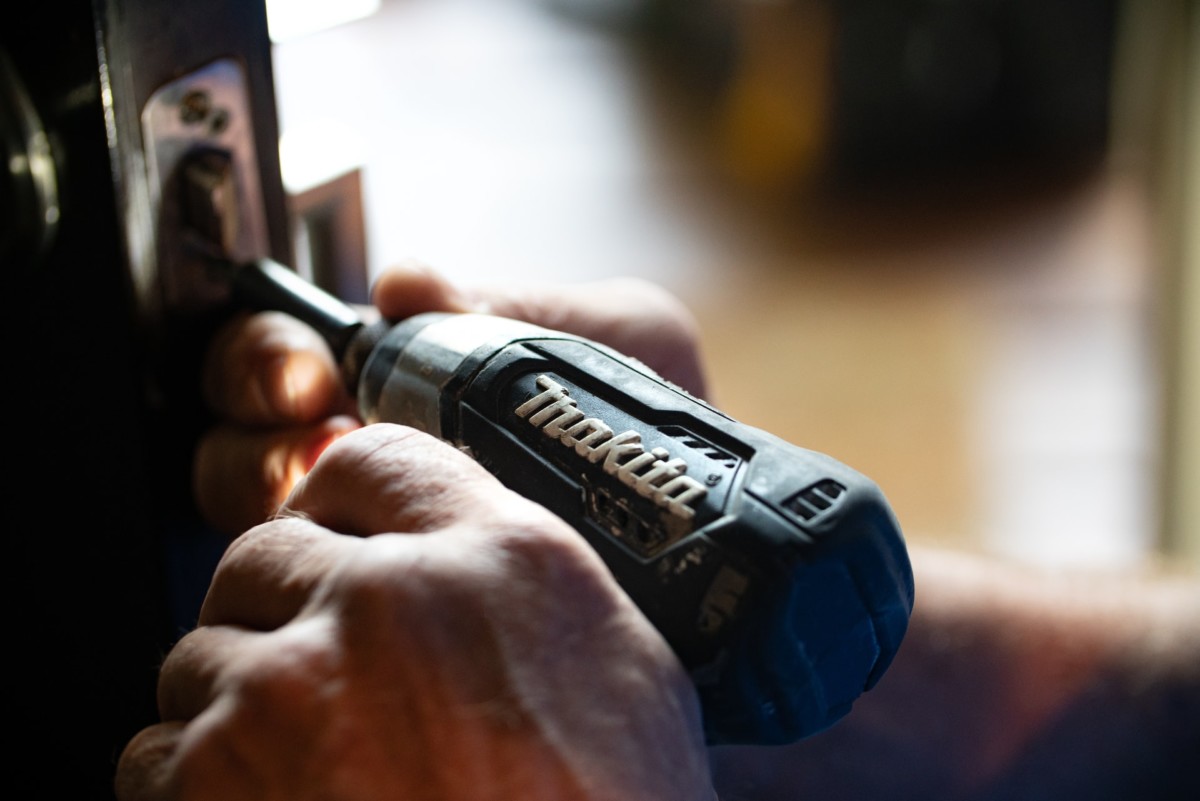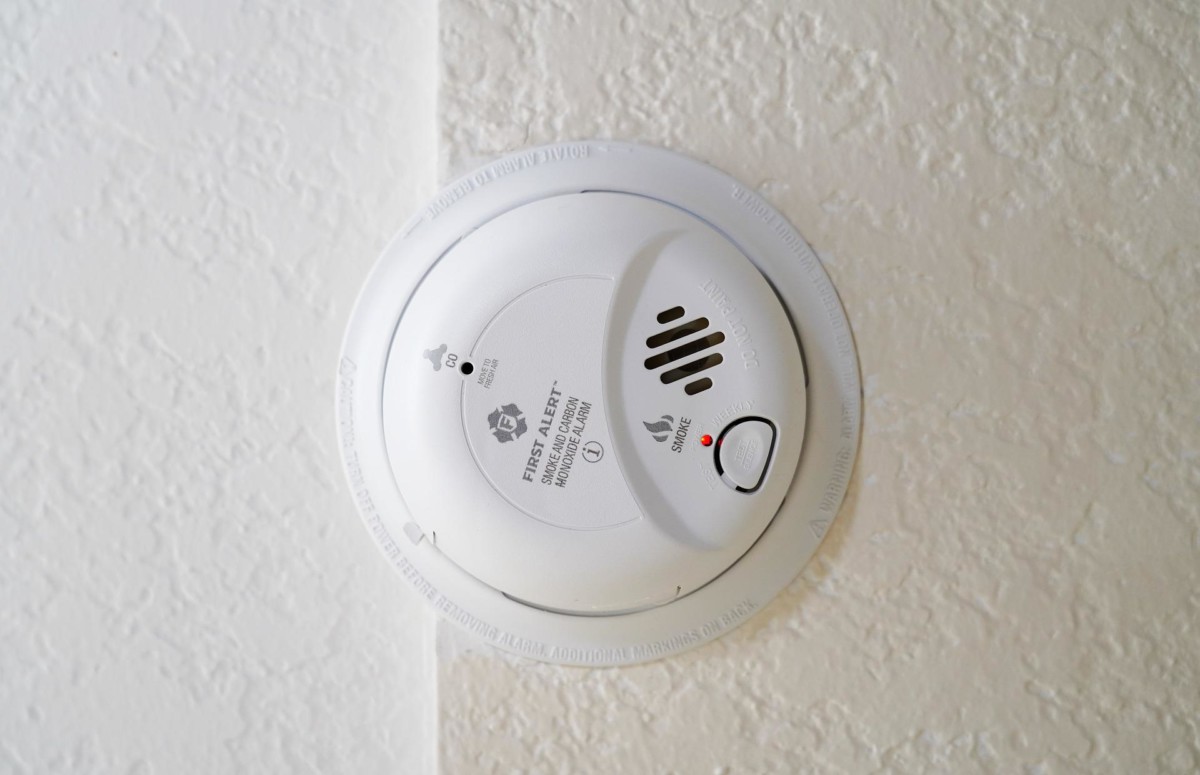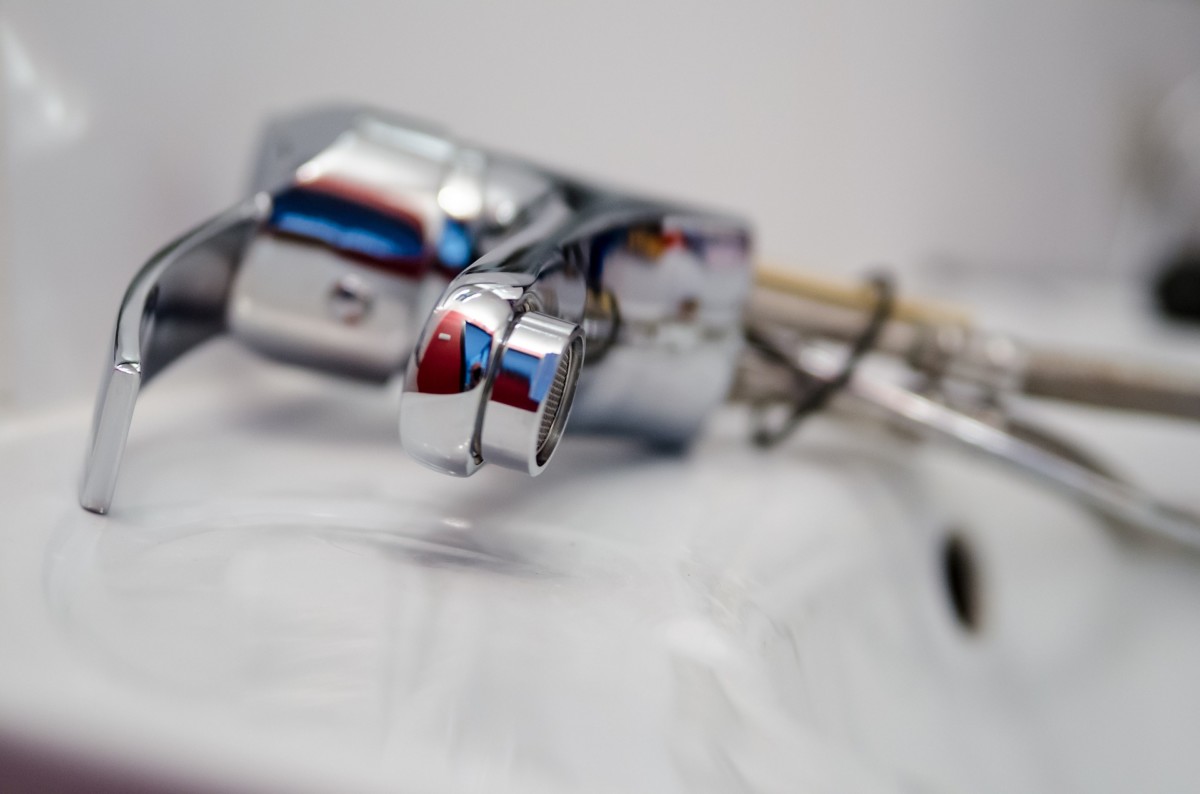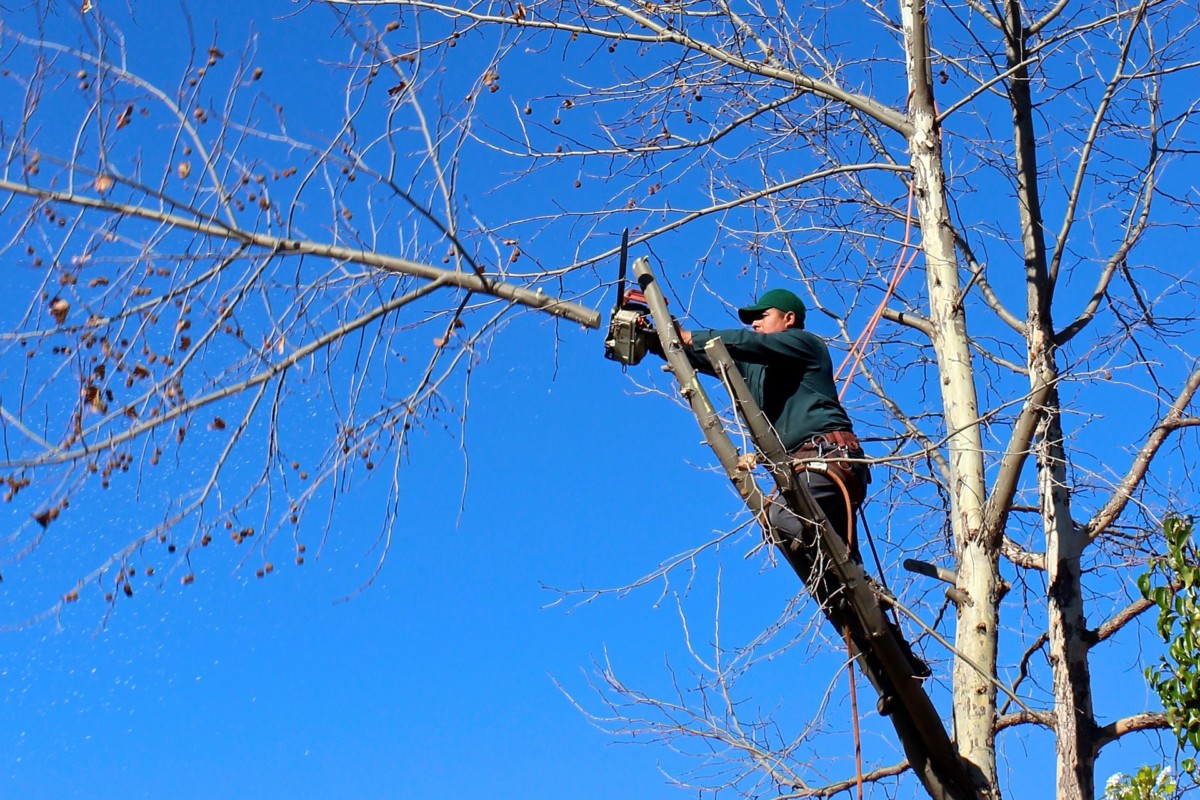A leaky faucet. A dishwasher that won’t turn on. An AC unit that only blows warm air. Apartment maintenance can handle them all.
The goal of apartment maintenance is to keep buildings and units safe and comfortable for all tenants. Property managers utilize these on-staff technicians for most repairs, but it’s up to each tenant to contact them when something needs attention. Here’s what you need to know:

What does apartment maintenance usually include?
Regular maintenance includes repairs and replacements as needed, in addition to the upkeep of common areas like fitness centers and event rooms.
Building owners budget these repairs to ensure the building stays safe and functional for their tenants. They may be subject to specific requirements in the lease agreement and the landlord-tenant laws in each state.
If a tenant breaks something due to negligence, they might have to pay for the repair, depending on the situation.
Standard services generally include non-emergency repairs, pest control, plumbing repairs, appliance repair, heating and cooling repairs, groundskeeping, and routine maintenance in shared spaces.
Non-emergency repairs
A non-emergency repair requires prompt attention but doesn’t immediately threaten someone’s health or wellbeing. This category includes problems like:
- Loss of power or water
- Broken refrigerator or oven
- Furnace or air conditioner failure
- Broken window or door lock
Emergency repairs require attention from a local emergency service as soon as possible. These include:
- Fire
- Suspected gas leak
- Carbon monoxide detector alert
- Severe flooding
If an emergency requires fire, ambulance, or police assistance, call 911. Once you’ve moved to a safe area, you can contact your landlord or property manager.

Repairs to locks, doors, and windows
Your lease should specify the landlord’s responsibility to fix broken or poorly functioning locks, deadbolts, and doorknobs. Most states require working locks on all external doors, but maintenance usually covers interior issues, too.
Typical landlord apartment maintenance responsibilities include fixing windows that don’t close or have broken glass. But if the tenant (or their guest) damaged the fixture, they’ll probably have to pay for the repair themselves.
Heating and air conditioning (HVAC)
HVAC repairs vary based on state and local regulations. Landlords are often required to provide and maintain heating systems, with a few exceptions. But an air-conditioning requirement isn’t as common.
If your landlord includes AC in the room, they’re responsible for maintaining and repairing it. You’ll be liable for any units you buy and install yourself. As always, make sure to get your landlord’s permission before you install anything in your apartment.
Appliance repair
Management is responsible for repairing any built-in appliances in the kitchen or laundry area. These appliances usually include:
- Refrigerator
- Range, oven, and/or stove
- Dishwasher
- Microwave
- Garbage disposal
- Washer and dryer
If any provided appliances malfunction, apartment maintenance should be able to get you up and running again.
Safety equipment
By law, apartments typically need to have working smoke detectors, carbon monoxide detectors, fire extinguishers, and, in many cases, indoor sprinklers.
Let your landlord know if a smoke or carbon monoxide detector is beeping. This usually means it needs a new battery.
Landlords usually test sprinkler systems when the apartment units are vacant. They should have fire extinguishers inspected yearly to ensure they’re in working condition.
Faucets, sinks, drains, and showers
Plumbing systems can weaken or fail at any time for many different reasons. Some indications of a plumbing problem could include:
- Leaky faucets
- Cracked sinks
- Leaky shower heads
- Leaky pipes under the sink or behind the shower wall
- Signs of mold in your apartment
If you think you have a plumbing issue, contact apartment maintenance to schedule a repair. If you try to fix it and make the problem worse, you could be held responsible for any damages.

Clogged, running, or leaking toilets
You can fix most simple clogs with a plunger, but other problems require professional help. If you notice running water or problems flushing the toilet unrelated to a clog, someone from the maintenance team can repair the failed component.
Electrical failures
Electrical issues can be hazardous and require specific tools and knowledge to safely repair. Non-emergency electrical failures include wall outlets, light switches, lighting fixtures, or ceiling fans that don’t work, often caused by a burned-out fuse or tripped breaker.
Most landlords won’t ask tenants to do much more than replace a light bulb. Anything more than that should be safely handled by apartment maintenance workers.
Built-in fixtures
As an apartment tenant, you rent the space and any fixtures and furniture that were there when you moved in. That includes things like cabinets, doors, shelves, mirrors, curtain rods, and any other item attached to the wall, floor, or ceiling.
Your building owner owns these items and is responsible for repairing them if they break. If you or a guest cause damage to a built-in item, you might have to pay for repair or replacement.
Pest extermination or removal
Whether you rent in an urban or rural area, you can expect insect visitors from time to time. Stray ants or cockroaches can be easy to handle with store-bought or homemade solutions. But a more severe infestation, including disease-carrying pests like mice or rats, should be reported to apartment maintenance as soon as possible.
In most cases, your landlord is legally required to exterminate or remove any unwanted bugs or critters in your apartment.
Landscaping
Building management is responsible for landscaping and property maintenance around the apartment building. This includes maintaining the lawn, trimming shrubs, and removing diseased or dead trees to prevent the risk of falling branches. The property needs to be maintained for tenant safety and livability. Any landscaping problems that could cause injury should be dealt with right away.

What isn’t included in standard apartment maintenance?
Your landlord should want everything inside the apartment building in good working order. However, as a tenant, there may be minor issues and cosmetic changes you can handle on your own.
Cosmetic changes
The color of the walls or flooring in an apartment unit doesn’t affect its livability, so management probably won’t change the wall color or flooring if it’s in good condition. If you’d rather see a different color on the walls, you can always ask your landlord for permission to repaint the room, but they aren’t obligated to let you change it.
Small repairs
If you noticed minor cosmetic problems after your move-in inspection, your landlord may or may not feel obligated to fix them. Little stains, dings, or scratches usually don’t affect the apartment’s habitability, even if they’re a bit unsightly.
If these issues affect the usability or safety of the unit or may lead to further damage, management may have apartment maintenance fix them.
Be sure to inform the landlord and document any issues as soon as you move in so you aren’t held responsible at move-out.
It might be quicker to fix simple problems yourself
You can call apartment maintenance about a basic drain clog, but it might be faster to try and fix the issue yourself. A drain cleaning solution or drain snake can help clear the clog, but make sure you don’t damage the plumbing. If quick fixes don’t work, you’ll want to file a maintenance request.
The same goes for many other quick fixes. If you notice a couple of spider webs, a flickering light bulb, or a loose bedroom door handle, you might save time by trying to patch up the problem yourself.
The same goes for certain routine maintenance tasks, like swapping old air filters with new ones. In many cases, these are the tenant’s responsibility from the get-go. This should be listed in your lease.
Contact apartment maintenance if there’s any chance of causing further damage or affecting your health. It’s always better to be safe than sorry.
What qualifies as emergency maintenance?
Emergency maintenance involves a problem with critical systems that stop you from safely living in your apartment. This could include the loss of power, hot water, or even running water altogether. Many apartment complexes have a 24/7 number you can call or text to report these issues.
Other problems that should be addressed immediately include:
- Serious pipe leaks or bursts
- Broken doors or windows
- Standing water
- Mold on, in, or under the walls, floors, or ceilings
Anything that affects your safety should be addressed quickly, so be sure to inform apartment management as soon as you can.

Which types of apartments use a maintenance service?
Any type of apartment can use an apartment maintenance service to maintain the property, from a duplex to a multi-unit building with hundreds of occupants.
High-rise or mid-rise apartments
These multi-unit apartments are popular in mega-cities like New York, NY, but they’re also scattered among apartments in Jacksonville, FL or Memphis, TN, most often in or around downtown.
High- and mid-rise building owners often hire an apartment maintenance service to keep the common areas clean and in good shape. Most also include certain apartment security features. If you’re a tenant in one of these residential buildings, you should be given a phone number, email address, or online portal login to use when you need to request repairs.
Low-rise apartments
A low-rise apartment may or may not have a maintenance service on call. Sometimes, the apartment manager doubles as the on-site repair person and handles common area maintenance. Each apartment complex or owner decides if maintenance is an on-site position, an outside hired service, or a combination of the two.
Duplex apartments
Duplex leases are more likely to make tenants responsible for lawn and snow upkeep, along with minor interior maintenance such as replacing light bulbs. These differences are commonly seen when comparing apartments versus condos, since condos are usually rented out by a single landlord. Larger landscaping projects and repairs typically fall to the landlord.
How to schedule apartment maintenance
Most apartment complexes have a number to call or text when you need to report a repair issue. Tenants may also be instructed to call the leasing office or property manager directly. Keep this number handy in case you ever need it.
Apartment complexes can also use online property management portals to receive tenants’ repair or maintenance requests.
If you notice an issue in your apartment that needs attention, reach out to the maintenance team as soon as possible. That way, you’ll nip the problem in the bud before it gets worse.
The post Apartment Maintenance: What It Covers (and What It Doesn’t) appeared first on Redfin | Real Estate Tips for Home Buying, Selling & More.
from Redfin | Real Estate Tips for Home Buying, Selling & More https://ift.tt/vVcZlFC


No comments:
Post a Comment